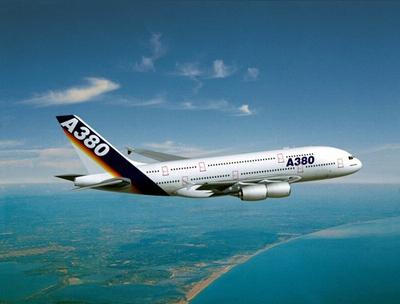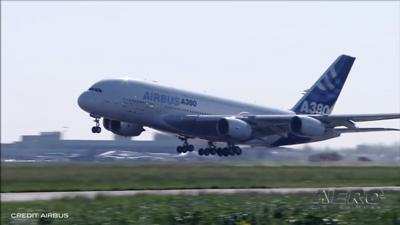Mon, Dec 20, 2021
The End of an Era, But the Start of Another
With only 251 aircraft built, the Airbus 'Super Jumbo' jet has seen its end, ultimately having a short enough production run that, were it any other vehicle, would become a rare limited edition for collectors to fawn over. Unfortunately, Barrett-Jackson doesn't auction off rare jets, so the A380 can only soldier on in commercial service.

Dubai's Emirates was the lucky recipient of the last one, which took off from the Airbus facility in Hamburg, Germany. The event saw no ceremonial fanfare, no sentimental send-off, quietly leaving its birthplace to the note of local aviation photographers. Reportedly, any plans to celebrate the last of the line were quashed in the interest of pandemic prevention. The A380 program has already become an object of retrospective interest, with some debating whether it was made too early to the aviation industry, or too late. The 4-engined giant was over 238 feet long, with a wingspan of 262 feet and a max take-off weight in excess of 630 tons. At maximum passenger capacity, it could carry up to 853 people in its 2-story cabin. Even the more forgiving, spacious, 4-class layout saw the airliner offer 545 seats, beating its closest Boeing competitor's 410 in the 747-800. The 747 is not far behind, with plans to stop production in 2022.

The ambitious project has seen the majority of its service with Emirates, who now operates around half of their 118-strong fleet. Those A380's in storage await better times to leave their hibernation, which may not be far off given the rate of improvement the industry has seen month to month. 2021 has seen more service of the giant aircraft than previously expected, with rapid travel recovery pushing them back into service to address short-term capacity issues. British Airways has pressed 4 of its 12 A380s into regular flight, as well as Singapore Airlines. The high-capacity utility is a boon to the heavily traveled city pairs that can sustain it. Pair like London to Sydney give credence to the idea that maybe the aircraft was ahead of its time, if only for the most popular flights. The cost was downright punitive for Airbus, overall almost 34 billion dollars. That experience reportedly did much to unify the company on the giant project, if nothing else, as well as push the engine tech that went on to
be vital to the Boeing 787 Dreamliner.
More News
Its Offerings Are Lighter, Cleaner, and Now Pushing Past 1,000nm on SAF Jet Fuel DeltaHawk’s diesel-powered aircraft lineup has seen incredible upgrades over the last few yea>[...]
The Airplane Experienced A Total Loss Of Engine Power On December 3, 2025, about 1600 central standard time, a Mooney Aircraft Corp. M20K, N57229, was substantially damaged when it>[...]
Make Sure You NEVER Miss A New Story From Aero-News Network Do you ever feel like you never see posts from a certain person or page on Facebook or Instagram? Here’s how you c>[...]
Aero Linx: European Society of Aerospace Medicine (ESAM) As a pan-European, independent forum, it works to promote the safety and health of all persons involved in aviation and spa>[...]
“We are excited to see Wisk achieve this milestone, and I’m so proud of the team that made it possible. The team at Wisk has built advanced technologies across flight c>[...]
 Aero-TV: DeltaHawks Diesel Power Steps Into the Spotlight
Aero-TV: DeltaHawks Diesel Power Steps Into the Spotlight NTSB Prelim: Mooney Aircraft Corp. M20K
NTSB Prelim: Mooney Aircraft Corp. M20K ANN FAQ: Turn On Post Notifications
ANN FAQ: Turn On Post Notifications ANN's Daily Aero-Linx (12.20.25)
ANN's Daily Aero-Linx (12.20.25) Aero-News: Quote of the Day (12.20.25)
Aero-News: Quote of the Day (12.20.25)




